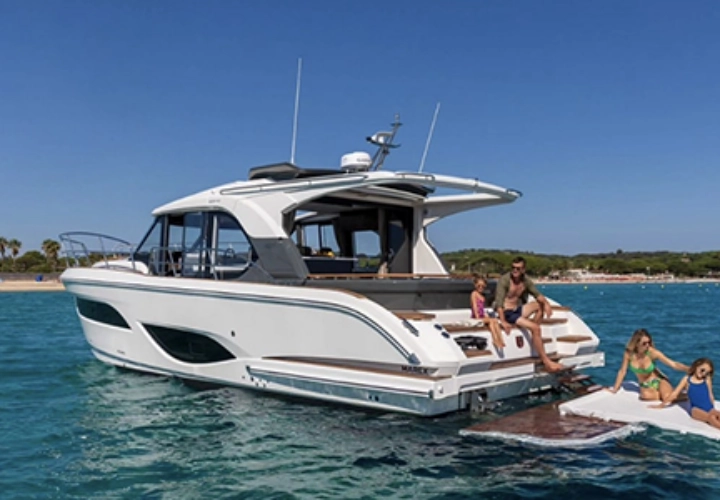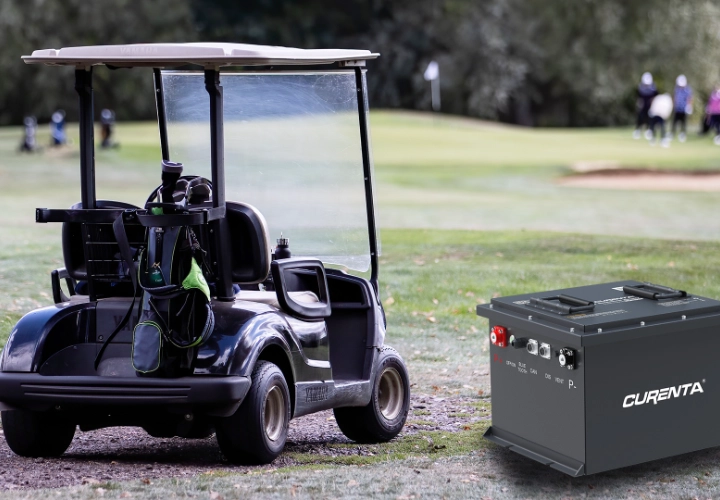Learn More >
Is the Car Cranking Sodium Ion Battery the Future of Automotive Power?
In the ever-evolving world of automotive technology, innovation continues to redefine what's possible. One of the most exciting developments in recent years is the emergence of the car cranking sodium ion battery—a sustainable, high-performance alternative to traditional lead-acid and lithium-ion batteries. As the demand for greener and more efficient energy storage systems increases, many experts and automakers are beginning to explore the potential of sodium-ion chemistry for cranking and starting engines.
At the forefront of this shift is CURENTA BATTERY, a company that has positioned itself as a leader in next-generation energy solutions. But what exactly makes the car cranking sodium ion battery stand out? And is it ready to replace conventional technologies in vehicles around the world? Let’s dive into the details.
What Is a Car Cranking Sodium Ion Battery?
A car cranking sodium ion battery is a type of rechargeable battery designed specifically to handle the high power output needed to start a vehicle's engine. Unlike traditional lead-acid batteries, which have been standard in vehicles for decades, or lithium-ion batteries, which dominate the EV market, sodium-ion batteries use sodium (Na) as their core active material.
Sodium is abundant, inexpensive, and easier to extract than lithium, making sodium-ion batteries a promising solution for a more sustainable automotive future. When engineered for high-discharge functions like cranking, these batteries can deliver short bursts of power required to start combustion engines—without the downsides associated with other battery types.
Why the Industry Is Looking for Alternatives
Traditional car batteries, especially lead-acid models, are heavy, contain toxic materials, and have limited cycle life. Lithium-ion batteries have become more prevalent in the electric vehicle sector, but they come with their own set of issues: high cost, supply chain challenges, and concerns over thermal stability and fire risk.
The car cranking sodium ion battery offers an alternative that addresses many of these issues head-on. Sodium is more environmentally friendly, widely available, and potentially safer under extreme conditions. As sustainability becomes a priority across industries, battery manufacturers like CURENTA BATTERY are stepping up to meet the challenge.
Advantages of Sodium Ion Batteries for Car Cranking
One of the most critical functions of a vehicle battery is delivering a high-power jolt to start the engine. For this application, several performance metrics are key—power density, cold cranking amps (CCA), cycle life, safety, and cost.
CURENTA BATTERY has focused its R&D efforts on optimizing these parameters, and the results are promising:
High Cranking Power: Sodium ion chemistry is now capable of delivering the quick burst of energy required for car cranking, thanks to advances in anode and cathode materials.
Superior Cold Weather Performance: One of the traditional drawbacks of lithium batteries is their poor performance in low temperatures. Sodium ion technology exhibits more stable discharge characteristics in cold environments, ensuring reliable engine starts even in harsh climates.
Longer Life Cycles: The car cranking sodium ion battery boasts a longer operational lifespan compared to lead-acid batteries, reducing the need for frequent replacements.
Lower Cost and Greater Availability: Since sodium is more abundant than lithium, supply constraints are less of a concern. This translates to lower production costs and potentially lower retail prices.
Enhanced Safety Profile: Sodium-ion batteries are less prone to thermal runaway and are generally considered safer, particularly for applications where stability is crucial.
Applications Beyond Cranking: A New Era of Versatility
While the primary purpose of the car cranking sodium ion battery is to provide the initial power for starting internal combustion engines, its applications extend far beyond that.
Many modern vehicles require power not just to crank the engine, but also to operate increasingly sophisticated onboard electronics. Infotainment systems, smart sensors, advanced driver-assistance systems (ADAS), and even stop-start technology all place additional strain on the vehicle’s power source.
Sodium ion batteries offer robust power delivery and recharge capability, making them an ideal choice for these multi-functional roles. This multifunctionality is a major focus of CURENTA BATTERY, which aims to redefine what vehicle batteries can do.
Environmental Impact and Sustainability
Sustainability is no longer a buzzword—it’s a mandate. From consumers to corporations, there is increasing pressure to minimize the environmental impact of manufacturing and product life cycles.
The car cranking sodium ion battery stands out in this regard:
Lower Environmental Extraction Impact: Mining lithium can have devastating environmental consequences. Sodium, by contrast, can be extracted from seawater and common minerals with a smaller ecological footprint.
Easier Recycling Process: Sodium-ion batteries use materials that are easier to recycle and handle at end-of-life.
Reduced Toxic Waste: Unlike lead-acid batteries, sodium-ion models contain no heavy metals or harmful acids, making disposal less hazardous.
CURENTA BATTERY incorporates eco-conscious practices throughout its design and production processes, ensuring that their sodium ion products meet both performance and sustainability benchmarks.
Challenges to Overcome
Despite their numerous benefits, car cranking sodium ion batteries are not without challenges. The technology is still maturing, and there are several technical and market-related hurdles to address:
Energy Density: Sodium-ion batteries generally have lower energy density compared to lithium-ion, which can be a drawback in applications where space and weight are critical.
Standardization: As an emerging technology, there is still a lack of industry-wide standards for sodium-ion battery specs, making integration into existing systems more complex.
Market Adoption: Many automakers and aftermarket battery distributors are hesitant to move away from familiar technologies until sodium ion proves itself through long-term performance data.
However, with companies like CURENTA BATTERY at the helm, the technology is evolving rapidly. Continuous innovation in material science, battery architecture, and system integration is closing the gap between sodium and lithium ion, particularly for cranking applications.
The Role of CURENTA BATTERY in the Transition
CURENTA BATTERY is not just developing sodium ion solutions—they are actively shaping the landscape of next-generation energy storage. With a dedicated team of researchers, engineers, and sustainability experts, the company is setting new standards for performance, reliability, and environmental responsibility.
Their flagship line of car cranking sodium ion batteries is already being tested in commercial fleets and early adopter markets. Initial feedback suggests not only technical viability but a strong economic case for long-term adoption.
By investing in local and international partnerships, expanding production capabilities, and maintaining a commitment to innovation, CURENTA BATTERY is playing a pivotal role in accelerating the shift toward sustainable automotive energy.
Future Outlook: Will Sodium Ion Become the New Standard?
The automotive industry is undergoing one of the most profound transformations in its history. Electrification, autonomy, and sustainability are converging to reshape how vehicles are powered and operated.
In this context, the car cranking sodium ion battery stands out as a game-changing solution. It addresses many of the limitations of current technologies while aligning with global sustainability goals. With continued research, broader adoption, and support from pioneering companies like CURENTA BATTERY, sodium ion could very well become the new standard for vehicle cranking power and beyond.
As the technology matures and production scales up, it’s only a matter of time before we see more sodium-powered cars on the road. And when that day comes, it will mark a significant milestone in the quest for cleaner, safer, and more efficient energy.
Final Thoughts
In answering the question—Is the car cranking sodium ion battery the future of automotive power?—the evidence points toward a resounding yes. With its blend of performance, safety, cost-efficiency, and eco-friendliness, sodium ion technology is ready to make its mark.
Thanks to innovators like CURENTA BATTERY, that future is closer than you think.

 English
English German
German Czech
Czech French
French Italian
Italian Hungarian
Hungarian Russian
Russian Japanese
Japanese Korean
Korean Arabic
Arabic Spanish
Spanish Portuguese
Portuguese Danish
Danish


 WhatsApp
WhatsApp